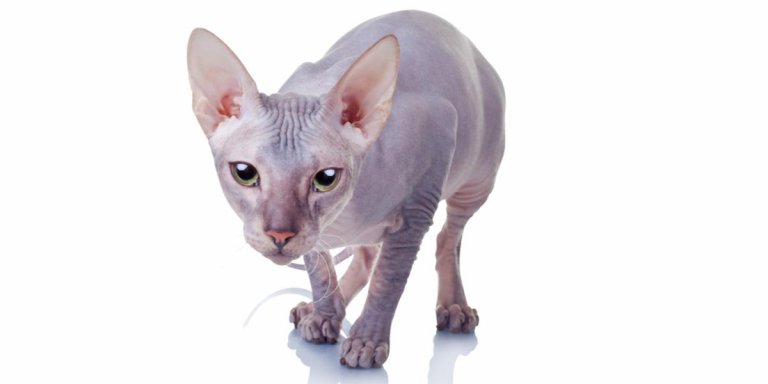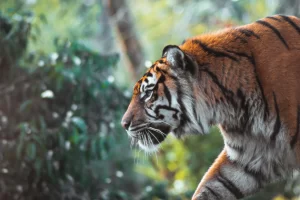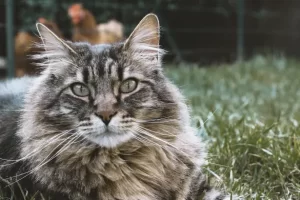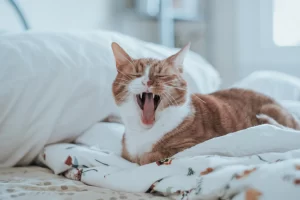
If you have been looking for a cat that is friendly, affectionate, playful, and gets along well with all family members, including children and the elderly, then someone may have recommended that you get a Donskoy cat breed. These cats are well known for being even-tempered and for their incredible ability to make friends with anyone who is interested. They are extremely social, friendly, and compassionate, which makes them ideal for families with kids, the elderly, and other pets. This cat bread also does not have a special nutrient requirement, thus easy to maintain.
So, are you considering buying or adopting a Donskoy cat and you want to know more about them? If yes, then today you have come to the right place. In this guide, we will tell you everything you need to know about this cat breed, to help make an informed decision. Now, without further ado, let’s get started.
What Exactly Is A Donskoy Cat?
Donskoy cat, also known as Don Sphynx or Russian hairless is a distinctive cat breed that is native to Russia. They are medium-sized with muscular bodies and wrinkled skin that is velvety to the touch.
This cat bread has four types of coats, including flocked, rubber bald, brush, and velour. Their coat is similar to the human skin and each type comes in a variety of colors. For instance, Donskoys with rubber bald coats are born without hair and remain hairless their entire lives. Donskoy can grow a winter coat on the chest and tail for protection against cold weather. However, they usually shed this coat when the weather becomes warmer.
Their most distinctive features include large, wide ears, long and slim toes separated by webbing, skin that is extremely elastic, and large almond-shaped eyes. They weigh between 6-12 pounds and have a life expectancy of between 12-15 years.
Origin Of Donskoy Cat
The Donskoy cat was first discovered in Russia in 1987 when a professor named Elena Kavaleva heard a meowing sound coming from a bag that some kids were playing soccer with. When she came close to the bag, she discovered that it was a kitten being kicked around by the kids. She rescued and adopted the kitten.
Months after staying with the cat, she noticed that the pet began to lose her hair as she grew older. The professor thought that the cat was sick and attempted all kinds of treatments to restore the cat’s hair but all was in vain. The cat later gave birth to more kittens, which were either born bald or lost their hair as they grew older.
It was later discovered that this cat breed had a genetic mutation that made them lose hair as they grow up, not a skin disease as they thought.
One of the kittens was later adopted by a professional breeder named Irina Nemikina who is credited for developing this cat breed as we know it today.
The Donskoy was officially recognized by the World Cat Federation (WCF) in 1997 and the International Cat Association (TICA) in 2005 under the name Donskoy.
Physical Characteristics Of Donskoy Cat Breed
Donskoys are medium in size with a height of between 10 and 14 inches. Males weight ranges between 9 and 11 pounds while females weigh between 4.5 and 6.6 pounds.
They have muscular bodies despite appearing delicate due to the absence of hair. Their skin folds are well marked, also due to lack of hair and their fingers are long and distinct. Their legs, on the other hand, are long and strong while their tail is thin and long.
Donskoys have a wedge-shaped head and a heavily wrinkled forehead that is flat. Their ears are large and wide while their eyes are almond-shaped, with a serious. yet a calm expression.
Coat And Coloring
Donskoys coat is of various patterns and colors. This cat breed has four types of coats. The coats are differentiated by the amount of fur and how long they last. Below are the four types of coats.
1. Rubber bald
They are born bald and stay bald for the rest of their lives
2. Flocked
This type of coat appears hairless and feels like a chamois. Cats with this coat may later become bald.
3. Velour
Cats with this coat are born with a bald spot on the head. Their hair usually disappears gradually as they grow older but may remain on the face, legs, and tail.
4. Brush
Donskoy cats with this type of coat usually retain most of their hair as they grow older but may have bald spots. Their fur can be wiry or soft.
Temperament and intelligence
Donskoys are very intelligent and friendly, which makes them ideal for people with families. In fact, their personality resembles more of a dog than a cat and that is why many people love them. No cat breed beats Donskoys when it comes to sociability and intelligence. They are also very energetic and playful and require a lot of attention from their owners.
The fact that they are intelligent means that they are incredibly easy to train. This cat bread can be taught advanced tricks that other cat breeds cannot and that is what makes them special.
They are very loyal and form a tight bond with each member of the family. They don’t like being left alone for a long period of time and often thrive in a home where family members are home most of the time. They are often happy and flexible. They are team players and will often engage in activities that the owner is doing.
Hygiene And Grooming
You need to take cleanliness very seriously when you keep a Donskoy cat breed. Donskoys produce a lot of sebaceous secretion and thus require to be cleaned regularly. You can clean them with cat wipes or a wet soft cloth. Proper hygiene of the ears, teeth, and eyes is also crucial for the health and well-being of this cat breed. Their claws also need to be trimmed regularly.
As pointed out earlier, Donskoys lose their hair as they grow older. This makes their skin vulnerable to UV damage. As a result, you need to ensure that they wear suitable sunscreen before they go out to help prevent skin problems such as solar dermatitis and cancer. They are also very sensitive to low temperatures. So, if you live in areas with very cold weather, you need to ensure that your house is always heated. Additionally, your cat also needs to have her own wardroom that includes warm clothes, blankets, and coats to keep her warm.
Because Donskoys are hairless, their grooming needs are not demanding. They don’t need to be brushed but they need to be wiped on a daily basis to get rid of the oil that their body produces. Full baths should be given once every two months. Use a shampoo that is specially formulated for cats.
Diet and nutrition
Donskoys have a higher body temperature compared to other can breeds. As a result, they usually eat more in order to maintain their body temperature, especially during the winter season. Like other cat breeds, Donskoys diet mainly comprises protein (80%), moderate fat (15%), and very low carbohydrate (below 5%). Proper hydration is also very important for this cat breed. Your cat should have easy access to clean and fresh water at all times.
How Much Does A Donskoy Cat Cost?
Donskoy is a rare cat bread, meaning you have to pay more to own one. When purchasing a Donskoy it is recommended that you buy from an experienced breeder who has specialized in hairless breeds. The price of Donskoys varies depending on your geographical location. Below is a general overview of Donskoys price.
| Country | Price in USD for a Donskoy kitten |
| United States | $500-$2000 |
| Canada | $450- $1750 |
| United kingdom | $600- $2100 |
| New Zealand | $430- $1500 |
| Australia | $350- $1500 |
Final Thoughts
If you are looking for cat bread that is unique, friendly, sociable, caring, intelligent, and loyal, then the Donskoy cat breed is a perfect choice for you. Their unique physical features are also outstanding. However, Donskoys are not just for anyone. They are only ideal for people who are ready to cater to their unique needs. Since they are hairless, this cat breed is vulnerable to sunburns, and they also have little tolerance to cold. As a result, they need a wardrobe of their own to keep them warm. They also require a lot of attention from their owners.


